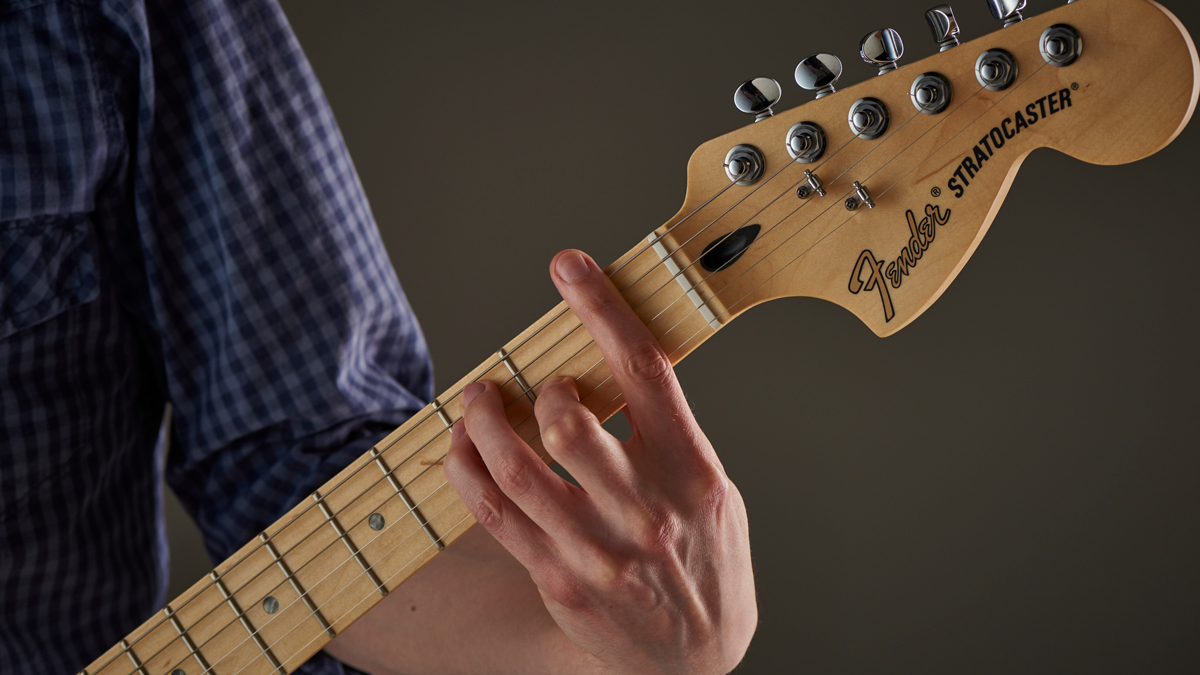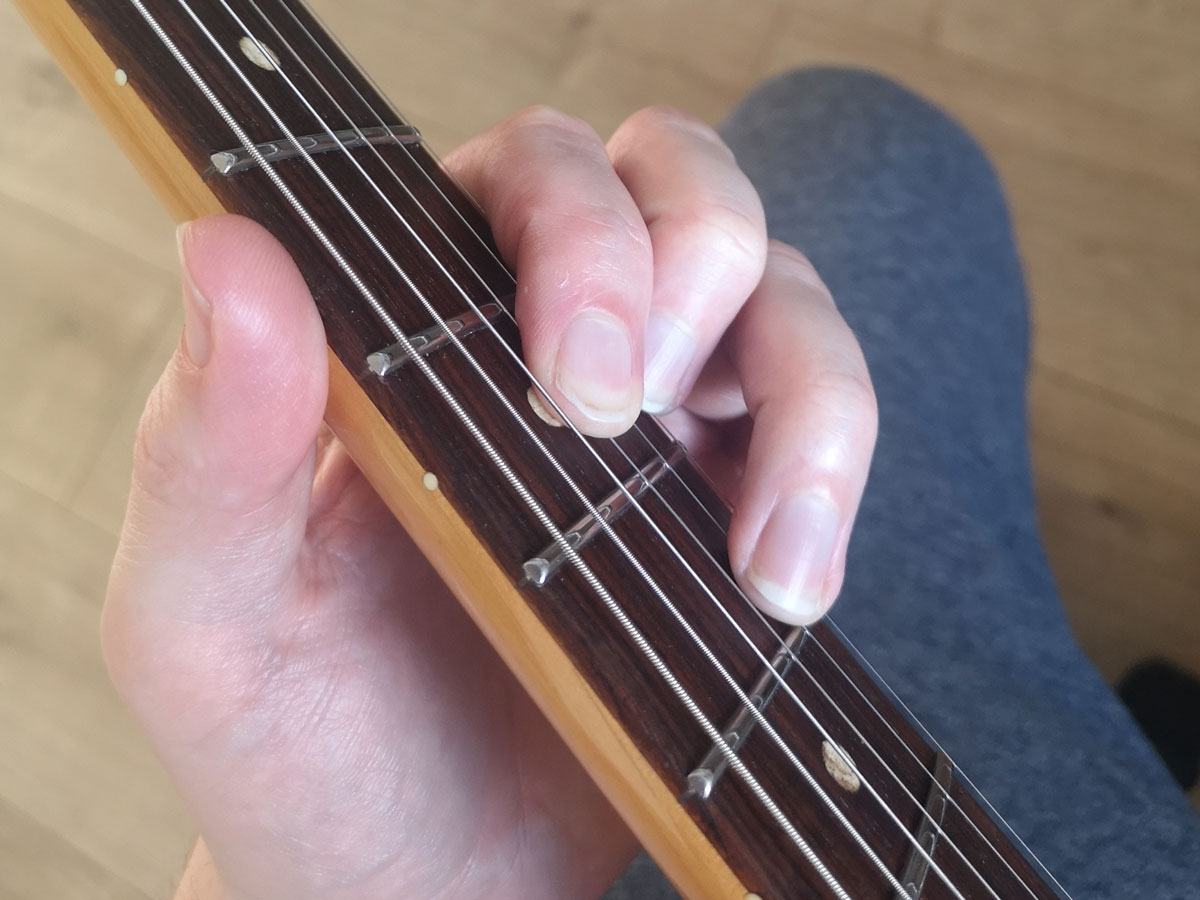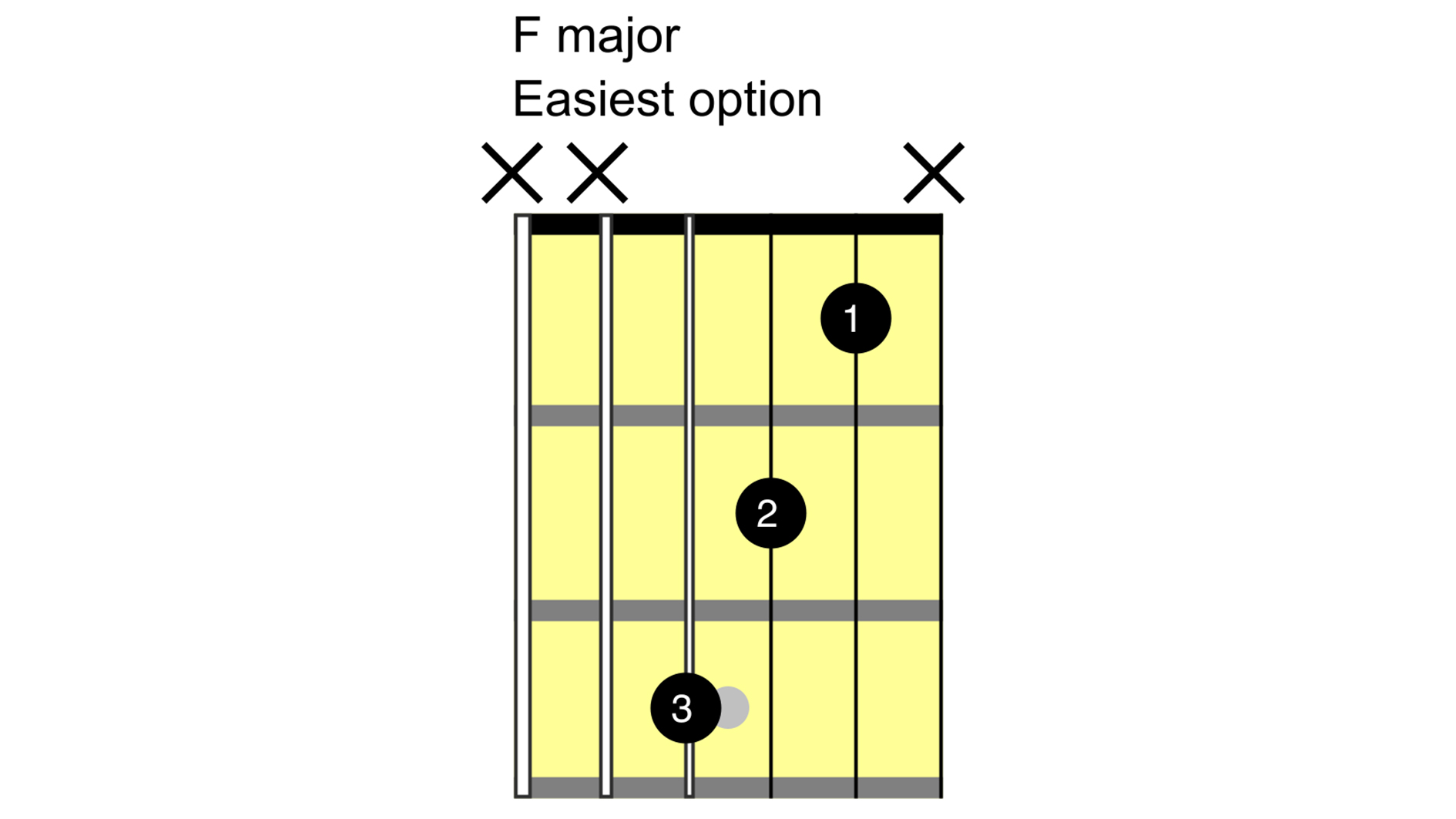How to play the F chord on guitar
Beginner guitar: Learning the F chord is often one of the biggest obstacles new guitarists face, but there are a variety of simple alternatives to make it easier to play

F has a reputation as a tricky guitar chord, and that’s because there’s no way to play it as an ‘open’ chord. An open chord is one that includes at least one open string, and usually is fretted within the first four frets of the guitar.
Unfortunately in standard tuning there’s no F string on the guitar, so learning how to play the F chord gets a bit more involved. Don’t worry though, we’ve got some easy solutions if you’re just starting out, as well as some full barre chords if you’re ready for a challenge.
First up, let's start with some easy ways to play the F chord on guitar.
How to play the F chord on guitar: easy F chords
F major D shape



Here’s the easiest way we can think of to play the F chord on guitar: play an open D major chord, then slide it up three frets. Now you should have your first finger on the G string fret 5, second finger on the high E string fret 5, and third finger on the high E string fret 6.
The bad news is that you can only strum those three strings. If you pluck the open D string, the harmony will instead sound like D minor 7. This can sound quite nice, but not if you were aiming for F major.
F major easy



Try this other easy F: play your third finger on the D string, fret 3. Second finger goes on the G string, fret 2, and your third finger goes on the B string, fret 1. That’s it. Again, though, you can only strum those three strings (although you might get away with the open A string, which creates an F/A or first inversion chord).
However, you’ll probably find that the underneath of your first finger quite naturally chokes the high E string, so it won’t matter if you catch that while strumming.
All the latest guitar news, interviews, lessons, reviews, deals and more, direct to your inbox!
How to play the F chord on guitar: intermediate F chords
F major four-string partial barre



The next step from our previous easy F is to turn it into a partial barre chord. To do this, you’ll flatten the pad of your first finger across the B and E strings on the first fret, so you’re playing both notes with one finger. If you haven’t done that before, try doing the barre on its own without any other fingers.
When that’s comfortable, add your second finger (G string, second fret) and third finger (D string, third fret) back on. The challenge is maintaining the barre with those other fingers in place. Getting your thumb in the right place makes a big difference to how hard that is. Try having your thumb vertical on the middle of the back of the neck, or alternatively resting near the top of the back, pointing towards the guitar’s nut. Experiment until you find what’s easiest for you.
F major five-string partial barre



You can take this four-string partial barre and make it into a five-string version. Move your third finger from the D string to the A string, third fret. Then put your fourth finger on the D string, third fret. You’re now five-sixths of the way to a full-fat F major chord!
How to play the F chord on guitar: F major barre chords



The full E-shape F major barre chord is played at the first fret. If you haven’t done a full barre chord before, we suggest you start by trying the same shape further up the neck. The closer you are to the nut, the more pressure you need to fret the notes, so try F once you’re more comfortable with the basic technique.
It’s called an ‘E shape’ barre chord because you’re using the shape you would use to play an open E major chord. You’ll need your first finger for the barre though, so you fret the chord shape with your second, third, and fourth fingers.
To play F major, barre across all six strings at the first fret with your first finger. Then add your second finger to the G string, second fret. Third finger goes on the A string, third fret, and fourth finger goes on the D string, third fret.
If you’re struggling with the full barre, then don’t worry: almost everyone finds this hard at first. Try angling your barring finger slightly so that you’re using the bony side of your finger rather than the softer underneath of the finger.



The A-shape F major barre chord is played at fret 8. Barre the eighth fret with your first finger, then fret the 10th fret on the D, G, and B strings. You can use a separate finger for each string, or barre again with your third finger (see our fretboxes and photos).



How to play the F chord on guitar: F major 7

If you’re not enjoying playing barre chords, F major 7 might be for you! It’s the same as the second of our easy F shapes above, but you leave the high E string open. So you’ll be playing the D string, third fret with your third finger; G string, second fret with your second finger, and B string, first fret with your first finger.
Make sure you’re not accidentally touching the open E string, and strum downwards from the D string. You might find this easier than any standard F major chords, and it will sometimes work as a substitute.
F major 7 barre chords



You can also play an F major 7 with the A shape barre. As before, barre the eighth fret with your first finger. Place your third finger on the D string, fret 10, second finger on the G string, fret 9, and fourth finger on the B string, fret 10.
How to play the F chord on guitar: F7



To turn the full E-shape F major barre into F7, remove your fourth finger from the D string. Optionally, you can add your fourth finger to the B string, fourth fret instead. That’s a big stretch, but it does sound cool.
You should now be barring the first fret with your first finger. Second finger is on the G string fret 2, third finger on the A string fret 3, and your fourth finger on the B string fret 4. Like all full barres, this is moveable. Shift it up two frets for G7, for example, or up four frets for A7.
- How to play guitar chords for beginners
- How to play the C chord on guitar
- How to play the A chord on guitar
- How to play the G chord on guitar
- How to play the E chord on guitar
- How to play the D chord on guitar
- How to play the B chord on guitar
Gear up with our beginner guitar guides
- Take your first steps with the best acoustic guitars for beginners
- Or plug in with the best beginner electric guitars
- Start them young with the best guitars for kids
- Essential guitar accessories for beginners
- Give you playing a boost with the best online guitar lessons
Jenna writes for Total Guitar and Guitar World, and is the former classic rock columnist for Guitar Techniques. She studied with Guthrie Govan at BIMM, and has taught guitar for 15 years. She's toured in 10 countries and played on a Top 10 album (in Sweden).

